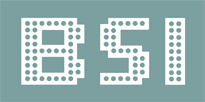

Home | About Company | Partners | Solution | Support | Contact Us
Geographical Information System (GIS)
Optical & Radar Satellite Images
Display Wall – Control Room Solution
Network Monitoring & Operations
Application Performance & Monitoring
Textile CAD/CAM & Engraving Solution
Textile Conventional Printing Solution
Textile Digital Sampling System

Network Centric Operations (also known as Network Centric Warfare) is a key component of DOD planning for transformation of the military. Network Centric Operations (NCO) relies on computer equipment and networked communications technology to provide a shared awareness of the battle space for military forces. Proponents say that a shared awareness increases synergy for command and control, resulting in superior decision-making, and the ability to coordinate complex military operations over long distances for an overwhelming war-fighting advantage.
Some resulting military advantages that are expected from applying NCO systems to military operations include the following:
Networked forces can consist of smaller-size units that can travel lighter and faster, meaning fewer troops with fewer platforms and carrying fewer supplies may be able to perform a mission effectively, or differently, at a lower cost.
Networked forces can fight using new tactics. During OIF, U.S. Army forces utilized movement that was described by some as “swarm tactics.” Because networking allows soldiers to keep track of each other when they are out of one another’s sight, the forces could move forward spread out in smaller independent units, avoiding the need to maintain a tight formation. Using “swarm tactics,” unit movements are conducted quickly, without securing the rear. Network technologies enable all units to know each other’s location. If one unit gets into trouble, other independent units nearby can quickly come to their aid, by “swarming” to attack the enemy from all directions at once.
The way individual soldiers are expected to think and act on the battlefield is also changing. When a unit encounters a difficult problem in the field, they can radio the Tactical Operations Center, which types the problem into an online chat room. The problem is then “swarmed” by experts who may be located as far away as the HQ.
The sensor-to-shooter time is reduced. Using NCO systems, soldiers in the field may have the capability to conduct an “on site analysis” of raw intelligence from sensor displays, rather than waiting for “return analysis” reports to arrive back from the continental United States
The SGI family of feature-rich, high performance SGI® UV servers and storage arrays running open source Linux are uniquely suited for the demanding and continuous 24/7 operations of the networked battlespace and the daily intelligence cycle. SGI technology enables the seamless integration of command, control, communications, computers and intelligence, surveillance and reconnaissance (C4ISR) systems. SGI core competencies for NCO in critical C4ISR applications include:
Most scalable COTS server technology running industry standard Linux
Industrial strength storage write/read on extensive SAN/NAS solution sets
Highest storage density, lowest cost, power and cooling on the market today
Best-in-class robust file system and archiver from data ingest through retrieva